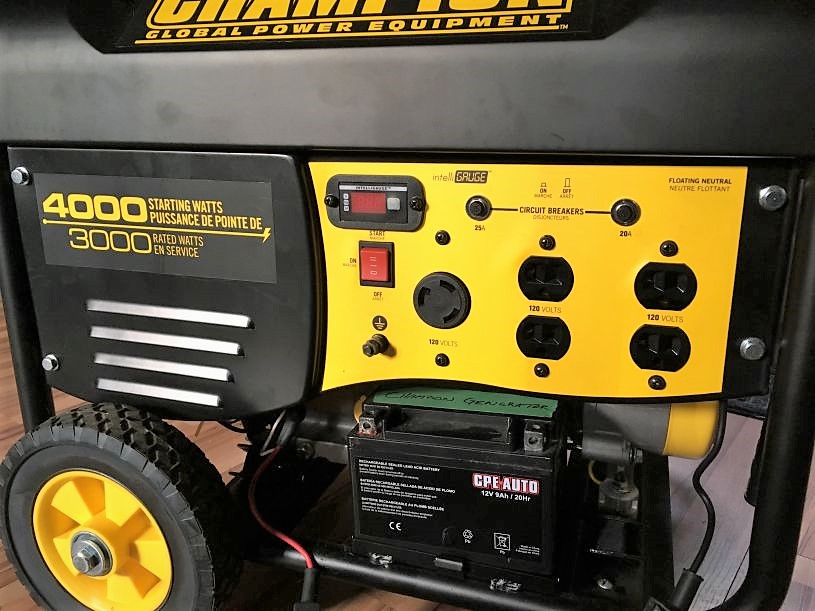Generator Dos and Don’ts:
When it comes to operating a generator to keep the lights on after a wicked storm, there are a few definite dos and don’ts you need to keep in mind. There are companies and products out there that aim to take all of the guess work out of the process, but you end up paying a fair bit extra for that convenience.
These generators set up on standby are often connected to a natural gas (or propane) supply, and are wired to an automatic system so that when the power from the road shuts off, your generator kicks in. Like I said these tend to be much more expensive and require experts to install and set up for you.
Most of the time you’re looking at a portable unit that you use to power a few essential items in your home. If this is the case, then the first step is to determine how much power you actually need.
Watts:
Generator output is often measured in Watts. Some appliances (and obviously light bulbs) will have their wattage consumption marked. In other cases they will show the Amps and Voltage they use. A rudimentary way to determine their consumption is to multiply the Amps by the Volts to get close enough to figure out your wattage. To be honest I don’t even count lights anymore. Their energy efficient consumption is peanuts compared to the larger stuff in your house. So add up your fridge/freezer (to keep your food from spoiling), your entertainment, computer, and media devices (to keep your brain from spoiling), and any small appliances you may need (keep in mind, coffee makers and toasters are energy suckers). You may need to factor in a well pump and or a sump pump depending on where you live. This brings us to our next point.
Voltage:
Most of your home runs off of 120 Volts AC. But some things will run off of 240 Volts! An electric dryer or stove for example. Now you might be thinking I don’t need to dry clothes during a power outage, fair enough. But I know well enough that my well pump draws 230 volts and my 120 Volt generator just won’t cut it. So when the power is out my house is without water.
Backfeeding:
Some people may tell you to do something called backfeeding. This is where you make an extension cord with two male ends, plug one end into your generator, and the other into a wall socket. The power is fed back into your electrical system, and in turn powering your whole house. This is a bad idea for a number of reasons. First of all if you don’t turn off your main breaker, you can cause major issues when the power comes back on, essentially blowing up your panel. Second you are putting terrible strain on the one breaker that the power is fed through risking damage and even fire. You are far better off installing a separate panel with a transfer switch. And if all of this sounds unfamiliar to you, just call in an expert.
Portable:
It’s more than likely you would be using a portable generator to get a few things going and to keep your food from going funky. If so, keep these things in mind for simple generator operation. Set the machine outside and make sure the exhaust is venting outdoors to keep carbon monoxide from entering the home. This can be deadly. Attach a ground wire to the unit. Without proper grounding, the system could make you the ground and give you a hell of a zap. Use fresh gasoline whenever possible. If the generator is likely to sit long periods of time before being run again it’s likely that the gas will gelatinize in your carb and leave it gummy, making it harder to start/run. To help avoid this, start your generator once a month and let it run for ten minutes. And as always, safety first. Read the owner’s manual to make sure you’re not doing anything that could jeopardize your family’s health and safety.
Preparedness:
Just remember that an ounce of prevention is worth a pound of cure. Know that if you’re firing up the old genny, there’s likely a storm raging outside that took out the power. Having your ducks in a row in advance will save you from fighting things outside and contributing to the swear jar!



